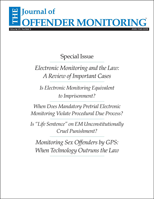The Council of Europe and Electronic Monitoring 2014
Author: Mike Nellis.; Dominik Lehner.
Source: Volume 25, Number 02, Fall/Winter 2012 , pp.23-25(3)

< previous article |next article > |return to table of contents
Abstract:
Early in 2014, after three years of study and debate, The Council of Europe formally adopted recommended practices for the use of electronic monitoring. Since its inception the Council has been a leading player in devising human rights-derived regulations for best penal practice, in respect of both prisons and community sanctions, in its 47 member states. Regulations issued by the Council are not binding on national jurisdictions, but constitute “soft law” which may be used by member states to guide or critique their national policies, and by the European Court of Human Rights to inform its legal judgments. The Council has traditionally been ambivalent about the use of electronic monitoring, but with EM’s steady expansion in Europe over the past thirty years, the Council has been compelled to give it more careful consideration. The new Recommendation consists of some thirty-eight “rules” covering every aspect of electronic monitoring. In abridged form, these are listed in the following article, “Recommendation CM/Rec(2014)4.”Keywords: offender’s consent; authorized absences; spatial and temporal regulation
Affiliations:
1: School of Law University of Strathclyde; 2: Justice and Security Department Switzerland.